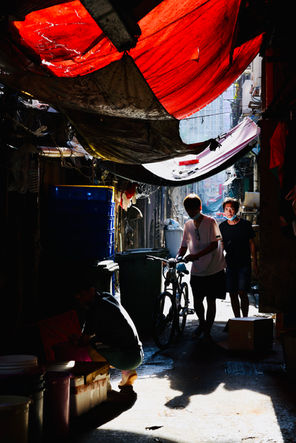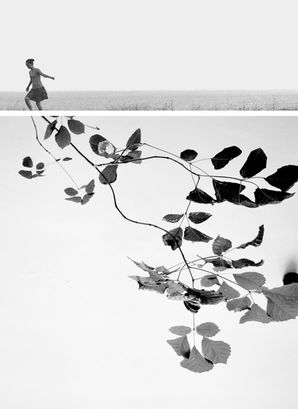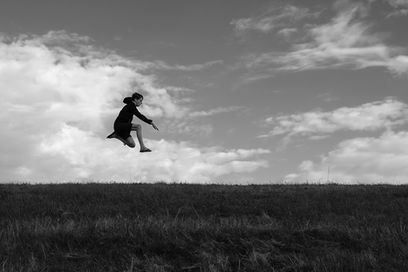
HONG KONG TAPESTRY
May 19, 2023
INTERVIEW
PHOTOGRAPHY Giles Isbell
INTERVIEW Melanie Meggs
The bustling streets of Hong Kong have seen some of the most tumultuous and trying years in the city's history. But through it all, it has remained a place of beauty and mystery, one that English photographer Giles Isbell has embraced and explored through his lens. Giles has sought to capture the underlying emotion of the city, with his high contrast shadows, reflection and abstract composition in his series on Hong Kong. Drawing from the political and social reality of this unique metropolis, Giles hopes to create something beautiful and half-revealed in his work, using masks as a metaphor for the stories that remain hidden and unspoken. In his photographs, he attempts to show the many faces and emotions of Hong Kong, from the joys of everyday life to the struggles of its past. By exploring the intricate details, Giles Isbell has hoped to create a unique tapestry of what it means to to have once called this majestic city home.

“English born and raised, but I always had an eye for adventure that has led me to live in all sorts of places - Sydney, Tokyo, and Dubai where I met my inspirational Milanese wife and started a family and, for the last few fascinating years, an irreversibly fast-changing Hong Kong. I teach history and I am lucky enough to work in the international school system which allows me to get paid to explore places I could only dream about as a child growing up in England. That’s why I’m in Hong Kong and soon to take up a post in Chiang Mai Thailand which I’m very excited about. I’ll be sad to leave here but I’m excited about a new adventure with my camera.”
IN CONVERSATION WITH GILES ISBELL
THE PICTORIAL LIST: Hello Giles…welcome to The List! What would you say first drew you to photography? What is it about this medium that you still have a passion for today? How did you find street photography?
GILES ISBELL: Hello Pictorial List thanks for having me. I grew up on the edge of Hull in East Yorkshire in the north of England. I was far too energetic, too unfocused, to sit still at school and this got me into all sorts of trouble; so academically I wasn’t a great success. If only someone had stuck a camera in my hand.
But back in the 70's and early 80’s, English teachers were often an indifferent bunch. This was a time when it was ok to hit children, or at best turn a blind eye to the random neglect that was common place in the comprehensive schools of the day. On weekends I used to head out with a very heavy book of birds and my dad’s binoculars for hours on end. I explored the woods and hedgerows seeing what I could find. I think what I enjoyed most was being alone with my thoughts and coming home with mud on my boots. I can’t remember seeing many particularly exotic birds, I remember lots of noisy acrobatic crows but I enjoyed the ritual, sense of adventure and lack of regimentation of open space. Perhaps this explained why I was drawn to photography because it was something I could do alone, like birdwatching; just me and a camera; without the judgement or sense of rejection I’d experienced in the school system. Going out alone with my thoughts inspires me still. It keeps me out of trouble. I think the streets I photograph are an extension of the woodland I explored as a child. I’m self-taught and this always feels like a great big ‘fuck you’ to those who had no faith or belief in me as a child.
I found street photography when I saved up enough to buy a Panasonic G1 that I had read about with a 20mm pancake lens and a ticket to India; I flew into Delhi and circumnavigated the country with only that camera and had a blast! That was twenty years ago and the start of my love affair with the streets.
TPL: Could you tell us what living in Hong Kong has inspired in your work? What special qualities unique to this city influence your street and the way you portray your community?
GI: Like all the world’s great cities Hong Kong is an insane mix of traditional and modern, orderly, and seemingly chaotic, but always very distinctly Hong Kong. This is what makes it so special. Hong Kong is somehow Chinese and at the same time it is not. It’s very specifically and fiercely Hong Kong. Hong Kongers have a way of carrying themselves, a way of acknowledging your presence politely but carrying on with their day as if you weren’t there.
I mentioned to a colleague when I first got here about what I’d noticed in Hong Kongers eyes, and I think she thought I was barmy. I see something in their look, a resilience, a resignation perhaps but definitely something reserved and gentle that I find appealing. Perhaps this is because since I’ve been here everyone has been masked-up drawing more attention to the eyes. But if eyes are the window to the soul do they somehow reflect the deepest emotions, and fears of political and cultural change. I’m trying to capture something of this in my photography. I’m also trying to communicate some of the changes that’s happening here. Hong Kong has shifted while I’ve lived here in ways it’s hard to fathom without speaking the language. It’s a very guarded society. What I am sure of is that my photographs are redolent of a time that’s unique in Hong Kong's long and turbulent history. Hong Kong reveals itself but never fully to me.
TPL: Where do you find your inspiration to create?
GI: This I don’t know the answer to. I think it was Helen Levitt who said she expressed herself with images as she was too inarticulate. I’m not schooled in the language of photography but it’s something I feel intensely though; I visualise better than I can describe. I guess my inspiration is somehow rooted in my childhood. And I have a really strong desire to be recognised at least by myself for something creative. I think that’s what keeps me pounding the streets.
TPL: There are two techniques that are colloquially referred to as ‘hunting’ and ‘fishing’ in street photography. When you are out on the street taking pictures, are you a ‘hunter’ or a ‘fisher’, or is it a combination of the both? Please describe your process.
GI: My photography is mostly spontaneous, and I think that makes me a hunter through and through although trying to slow down. I see the benefits of shooting with intention but usually find myself being led by the mood I find myself in on any given day which usually dictates that I hunt. I’m impatient too which makes fishing almost intolerable most of the time. Like a moth I tend to be directed by the light and I’m forever dashing around looking for a source of illumination. This is the challenge I’m inspired by.
TPL: What is the most rewarding part of being a street photographer for you? What are some of the challenges that you have faced?
GI: I’m incessantly searching for that almost biblical moment when the cloud’s part, bathing my stationary subject in light, which rarely, if ever happens. The most rewarding part of being a street photographer for me are those moments that I alone experience. Hong Kong in the dead of night is alive in ways I would never have experienced if it hadn’t been for photography. Those moments quietly standing in a darkened doorway watching the city flow past. The biggest challenge for me here is using a 50mm lens in some of the narrow streets realising my back is against the wall, literally, and I haven’t got the width to capture the scene in front of me. It’s also constantly challenging trying to translate the image I can visualise into an image I can capture in reality. It’s the uncertainty and uncontrollable elements that need to somehow converge that make street photography so unpredictable and exciting. The reward is as much in the process as it is the result.
TPL: Is it impossible for you not to be constantly on the lookout for a moment to be captured?
GI: Yes, totally impossible. I’m obsessed. A glint in the eye or light falling in a certain way sets me off composing in my head. I’m doing it now as I write. Angles, shadows, reflections are everywhere. I want to be taking photographs all the time and I think it drives my long suffering wife mad.
I’m self-taught and this always feels like a great big ‘fuck you’ to those who had no faith or belief in me as a child.

TPL: How do you manage a work/photography balance?
GI: With great difficulty. As a father of two everything all the time alone I have is precious. What I’ve learned to do is maximise the time I’m allocated and that makes the photographs I capture all the more meaningful.
TPL: Do you have any favourite artists or photographers you would like to share with us, and the reason for their significance?
GI: I’m inspired by Don McCullin; his work stands apart. My parents read the Sunday Times back in the day and I remember being mesmerised by his Sunday Supplement Magazine covers that used to be discarded around the house. I have strong memories of staring intently at these complex images, usually of war torn countries and trying to understand the world they came from but having no idea about the complexities of the places they represented. They were distant and far away. I think more than anything they made me realise that England was too small for me and I wanted to go out and explore. I don’t come from anything like the same working class background as him but I lived in North London for a few years close to where he grew up. My father and grandfather were both born in North London as well, and although we are a generation apart, I’ve always felt slightly ashamed of my education. He has written about his shame too and this resonates with me. He’s an outsider. He talks about darkness in his work that comes not so much from his experiences of war but his background growing up in poverty on North London streets. He’s significant as he made me look outwards. I’m inspired by his harnessing of talent despite the background he came from.
TPL: If you could just choose one photographer to shoot alongside for a day...who would you choose? And why?
GI: Apart from Don McCullin, if I could, I’d share the early morning golden hour with Alex Webb as he goes about planning his offbeat multi-layered compositions as the sunrise slowly reveals shadows, colour and silhouettes out of the darkness.
About an hour before sunset, I’d be hanging out with Saul Leiter in a quiet bar with a table by a window overlooking a crowded street alive with the flotsam and jetsam of city life passing by. I’d watch, and listen, intently as he explains to me the process he goes through to make those photographs that stop me in my tracks whenever I see them. The ones with beautiful colour combinations that somehow capture a suggestion of movement often obscured or partially glimpsed. His photographs are so wildly evocative. I love his unhurried way of capturing a multi-layered New York using reflection and rain. It’s the story part-told I find so intriguing with both of them.
More realistically I’d love to spend a day with Stuart Paton (which I could as he runs workshops in Milan); I’m still figuring out his stunning use of light and shade and seemingly impossible reflective compositions; I love what he’s doing.
TPL: What was the first camera you ever held in your hand, brought to eye, and released a shutter on? What is the camera you use now and your preferred focal length? Is there anything on your wishlist?
GI: My dad had an old Pentax; left dusty and unused in a wardrobe since he left Cyprus where my family had lived for a few years in the 60’s; my older sister Sarah was born there. He took some wonderful B&W family pictures with it that are of a family centred time and place long lost. He was a navigator in the Royal Air Force based in RAF Akrotiri. My parents lived in a Turkish district somewhere in Limassol, and he used to tell me of evenings spent listening to sporadic gun battles in the neighbourhood and once having to slam his Hillman Minx into reverse after being shot at on his way to the airfield; he was told to carry his service pistol with him at all times. Thankfully he never had to use it. It was only years later I realised McCullin’s first overseas Observer assignment was to cover the Cypriot Civil War in Limassol when my parents were still living there. I think the British personnel stationed there were left alone as at the time this was strictly a Turkish/Greek quarrel. Years later I found that camera. I was 7 or 8 years old and I’d open-up the leather case with a click and marvel at the chrome and glass and feel its weight in my hands. There was never any film in it.
I shoot on a Canon R5 with a 50mm f1.2 lens which is a bit of a monster, but I love its low light ability. I want a Leica of some sort or another and I’m not sure what model yet but do know I want something light, small and unnoticeable. I’m attracted to Leica’s history and somebody gave me an uppercut in Milan last year and made me think I need a less obtrusive lens for my street work especially in Europe.
TPL: Are there any special projects that you are currently working on that you would like to let everyone know about? What are some of your photography goals for the next 3-5 years?
GI: I’m trying to put together a series that builds on my current series. My goals in the next 5 years are becoming happier with what I do, more confident to display my work. I want to truly master street photography (if that’s ever possible). I know I’m on a journey and what I hope is that I can put together a body of work that means something someday to someone somewhere.
TPL: “When I am not out photographing, I (like to)...
GI: Take cover.”

Giles Isbell has created stunning images of Hong Kong and is now taking his talents to Thailand. His work captures the beauty of the cities he visits in his own unique way. We wish Giles the best of luck in this exciting new chapter of his life and are looking forward to seeing his work from Thailand. To watch Giles' journey, connect with him on Instagram.















































